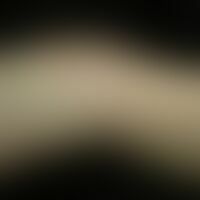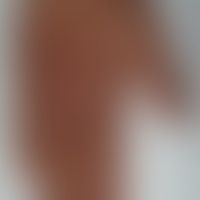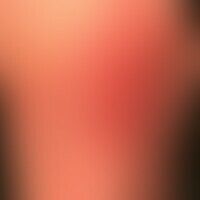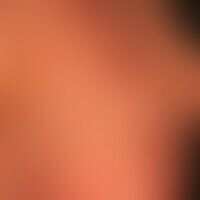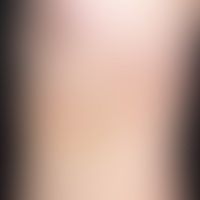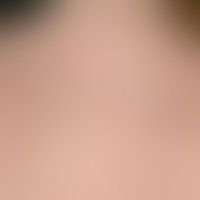Image diagnoses for "Plaque (raised surface > 1cm)", "red"
423 results with 1872 images
Results forPlaque (raised surface > 1cm)red

Lichen sclerosus (overview) L90.4
Lichen sclerosus et atrophicus. extensive infestation. extensive fresh and older bleeding.

Carcinoma of the skin (overview) C44.L
Cutaneous carcinoma: a flat growing, circinally limited, red plaque, without any symptoms Diagnosis: Bowen's disease

Folliculotropic mycosis fungoides C84.0
generalized clinical picture: surface smooth plaques, which dissect at the edges, with clear evidence of follicular involvement.

Eyelid dermatitis (overview) H01.11
Seborrhoeic eyelid dermatitis: chronic recurrent, therapy-resistant dermatitis of the eyelids and the adjacent facial areas; the symptoms subside if the patient stays in climatically favoured regions.
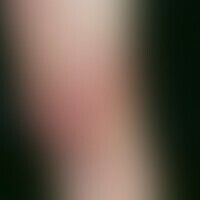
Acrodermatitis chronica atrophicans L90.4
Acrodermatitis chronica atrophicans. 78-year-old female patient with confirmed neuroborreliosis 6 years ago and still positive Borrelia serology. Multiple, chronically inpatient, persisting for 2 years, asymmetrical (only on the left leg), blurred, sometimes burning pain, large, red to red-livid, smooth erythema, partly with crinkled surface (cigarette-paper-like puckering).

Necrobiosis lipoidica L92.1
Necrobiosis lipoidica: bilateral, gradually increasing, moderately sharply defined, confluent, reddish-brownish, centrally slightly atrophic plaques that have existed for about several years.
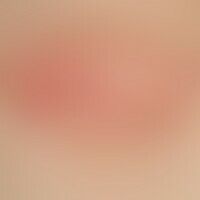
Bowen's disease D04.9
Bowen, M.: solitary plaque, progressive in size, occasionally accompanied by itching, measuring 1 x 7 cm, sharply and arching, border-emphasized plaque, on the right lumbar side in a 74-year-old woman; a reddish, partly scaly aspect and central fading are impressive.

Plaques muqueuses A51.32
Plaques muqueuses: disseminated, localised red, symptom-free plaques confluent in the centre of the tongue with preserved papilla structure (see following figure).

Dyskeratosis follicularis Q82.8
Dyskeratosis follicularis: 74-year-old woman. large , hyperkeratotic zones with reddish, partly macerated papules and firmly adhering, partly eroded, confluent keratoses on the capillitium and in the facial area preauricularly, existing since early childhood. the patient has a somewhat neglected appearance. the skin lesions have a foetal odour. the lesions increase with sweating or heat, especially in the warm season.

Dyskeratosis follicularis Q82.8
Dyskeratosis follicularis: Infestation of the palms of the hands; in central areas of the palm flat, common keratoses, at the ball of the thumb about 0.1-0.2 cm large, glassy papules.

Parapsoriasis en plaques benign small foci L41.3
Parapsorisis en petites plaques: completely symptom-free red (hardly palpable), slightly scaly plaques; recurrent course for years; improvement in the summer months or under UV therapy.

Guttate psoriasis L40.40
psoriasis guttata. small, exanthematic form of psoriasis after streptococcal infection. only slight scaling (due to pre-treatment). note the indicated linear patterns (koebner phenomenon). the auspitz phenomenon (finest punctiform bleeding after removal of the uppermost scaly layer with a wooden spatula) can still be triggered even in these pre-treated lesions and is therefore an excellent diagnostic sign (best triggered in the small papules).

